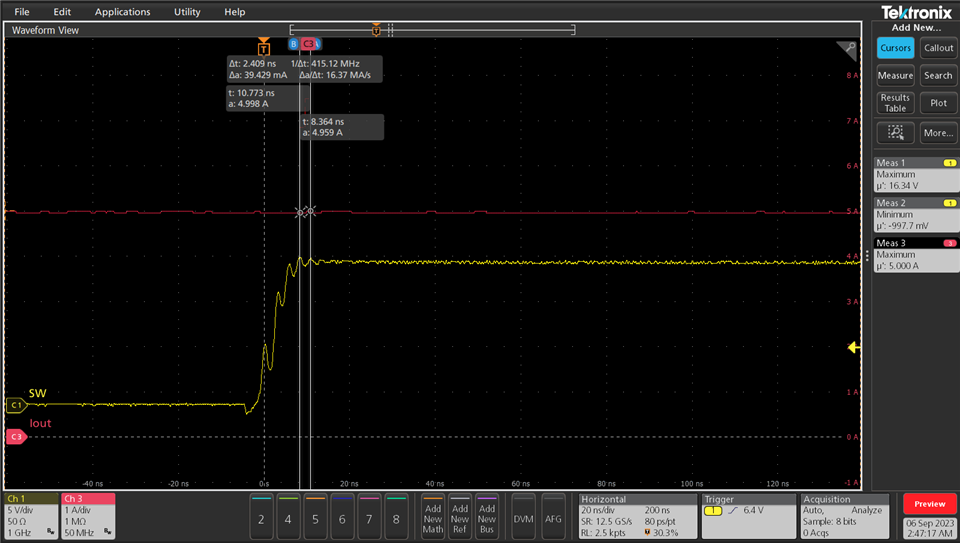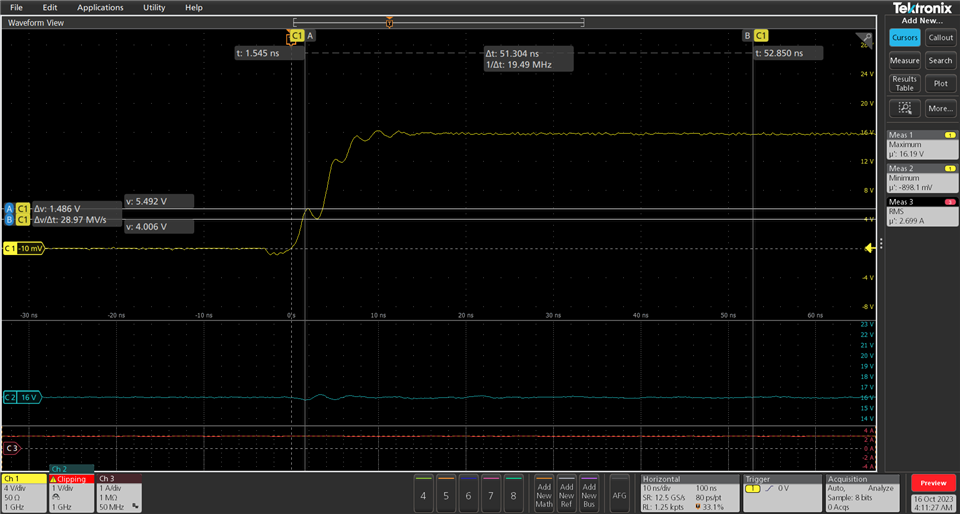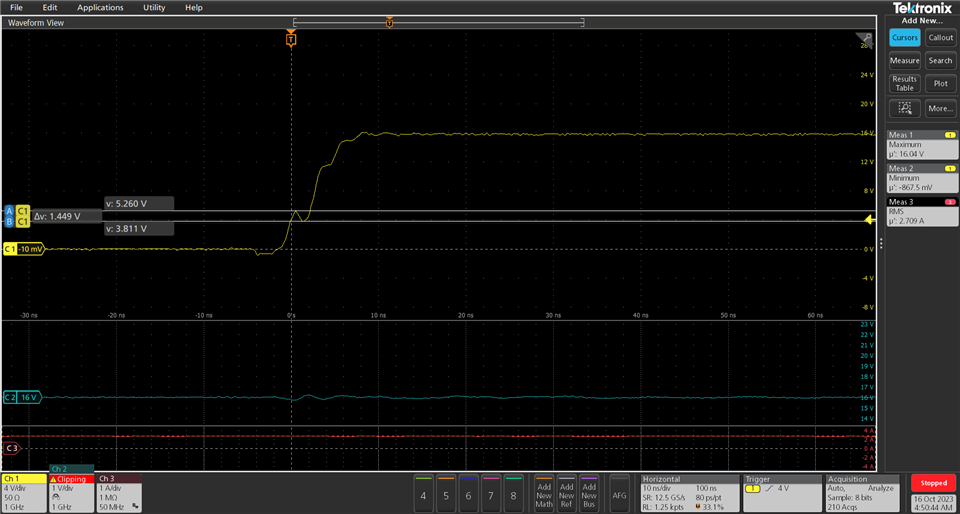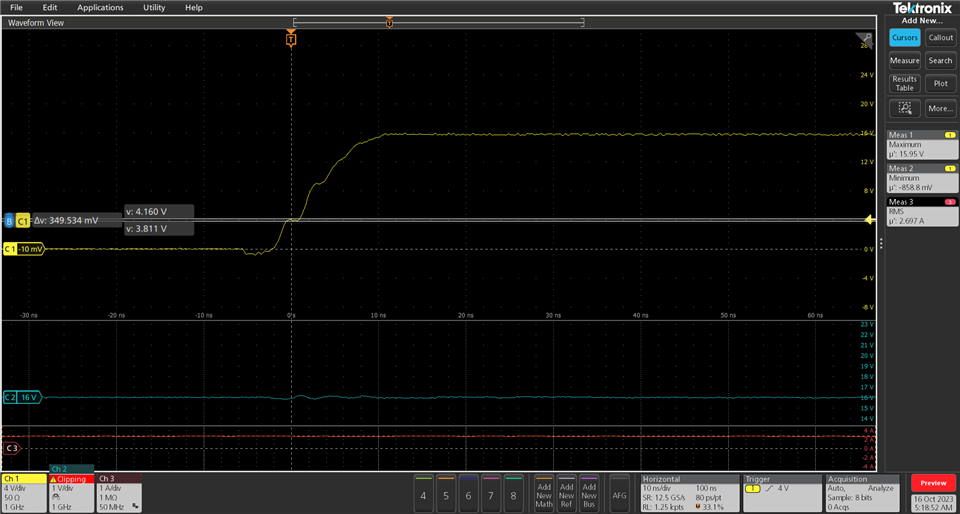Other Parts Discussed in Thread: LM61495,
I have some question on phase node measurement, so need TI clarification. As figure 1, this is schematic for 12V->5V power application. I’d like to check about Vin-SW and SW-GND voltage level.
1. In general, the voltage of SW-GND (figure 3) should be higher than Vin-SW(figure 2) with loading. But LM61495 shows different result. Can you help check this result is ok?
2. Zoom in the rising edge of SW-GND, some of ringing can be observed(figure 4). Is it ok for this phenomenon? What does the reason cause this phenomenon? Thank you.
- Figure 1

Figure 2. Vin-SW at 5A loading (please ignore meas4 date)
Vmax=18.31V, Vmin=-0.424V

Figure 3. SW-GND at 5A loading
Vmax=16.61V, Vmin=-1.873V (Is this value ok for negative voltage)
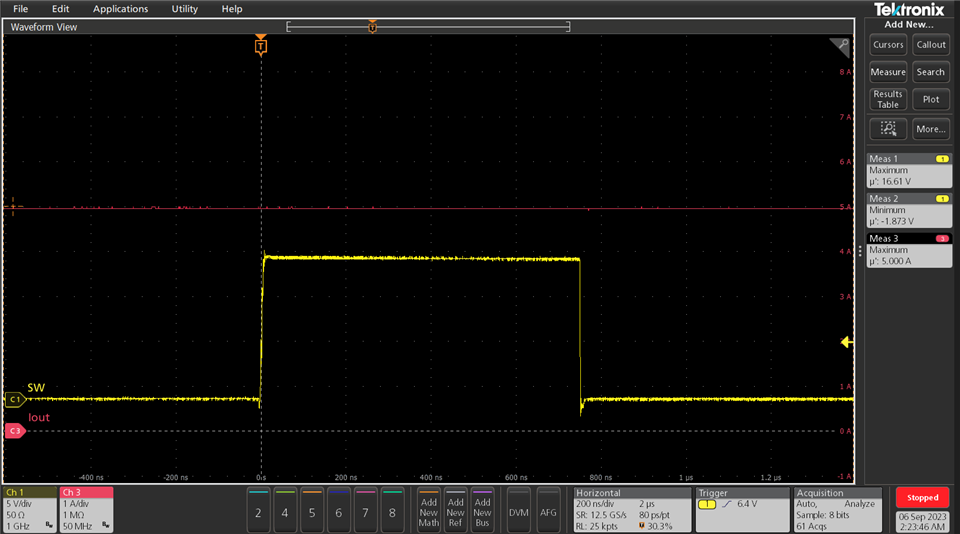
Figure 4. SW-GND_Zoom in
